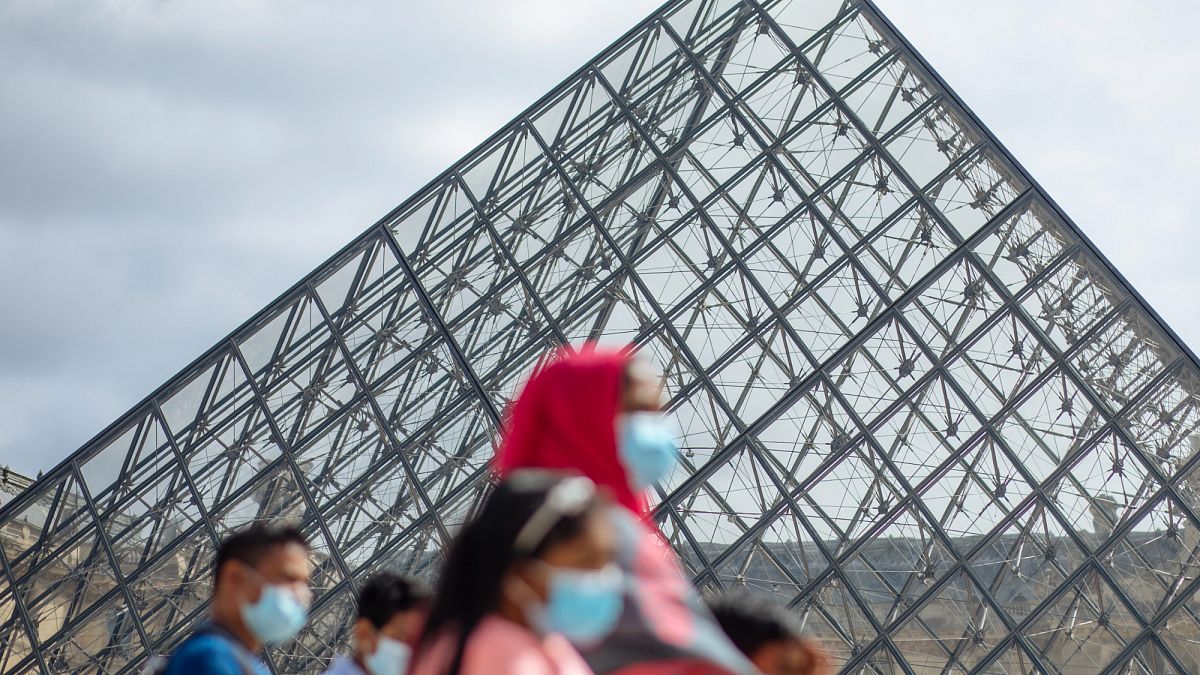Rubin Observatorys first images flaunt millions of galaxies. Take a look.


A massive new telescope with the world's largest digital camera is expected to create the most comprehensive digital movie of the night sky ever attempted, capturing about 40 billion space objects.
The Vera C. Rubin Observatory in northern Chile released its first images to the public on Monday. Later this year, it will begin its primary project, the Legacy Survey of Space and Time, sweeping across the entire visible southern sky every three to four nights for at least a decade. The goal is to create the most detailed time-lapse view of the cosmos so far, allowing astronomers to track objects that move and those that change brightness.
In just 10 hours of test observations, Rubin has already demonstrated its power. It captured over 2,000 previously unknown asteroids in our solar system, plus millions of stars and galaxies. The rollout is a sneak peek at what the observatory will do for the next 10 years: Each night, it’ll snap about 1,000 high-definition photos — providing a veritable "firehose of data," researchers say.
For astronomers, this means catching sight of supernova explosions, pulsating stars, and near-Earth asteroids and comets. Some of these images could reveal ripples in space-time, offering hints of invisible forces shaping the cosmos. For the rest of us, it means better planetary defense, potential discoveries of unknown objects, and, of course, beautiful eye candy.
"Between objects in most astronomical pictures, it kind of looks like inky black space. That's what you've seen before, but that's not what you saw here," said Steven Ritz, the project scientist for Rubin's construction, during a livestreamed news conference. "That inky black space actually is full of stuff. It's full of galaxies. It's full of all kinds of interesting things."

The observatory, built by the U.S. Department of Energy and the National Science Foundation, sits atop a desert mountain, Cerro Pachón, high in the Chilean Andes, where the skies are clear, dry, and stable. It's named for astronomer Vera Rubin, who uncovered early evidence of so-called "dark matter," a mysterious-yet-abundant substance in space that doesn't shine or interact with light, according to NASA. Now Rubin's namesake observatory will try to crack the code of that material and probe some of the other biggest cosmic mysteries.
With a primary mirror that stretches 28 feet wide, Rubin isn’t the biggest telescope in the world — but it may be among the busiest. It's equipped with a hulking digital camera that's the size of a small car and twice as heavy. With 3,200 megapixel resolution, a full picture from the camera would require a wall of 400 TVs covering a basketball court.
The telescope’s unusual design, which allows the large instrument to swivel nimbly, makes all of this possible. At full tilt, the 300-ton structure can revolve all the way around in about a half-minute, with magnetic motors allowing it to coast on a thin layer of oil.
"No other large telescope in the world can move this fast," said Željko Ivezić, director of the observatory's construction. "It moves around in seconds. Other large telescopes take minutes."
The observatory has the potential to discover 5 million new asteroids in just two years. Over the next 10 years, Rubin will take pictures of about 20 billion galaxies.
In its debut, the telescope turned its eye toward two familiar showstoppers in deep space: the Trifid and Lagoon nebulas in the constellation Sagittarius. These colorful clouds of gas and dust, each thousands of light-years away, are baby star nurseries.

The Trifid glows with pinks and blues, carved by young stars punching through the haze. Nearby, the Lagoon sprawls in a soft rosy glow, its tangled wisps shaped by stellar winds.
Rubin’s early snapshots also include a bustling corner of the universe: the Virgo Cluster, a grouping of galaxies bound together by gravity. Among them are two luminous spiral galaxies that shine in bright, electric blue — cosmic pinwheels spinning in the dark.
The sky survey is expected to undertake the biggest supernova hunt ever — specifically focusing on exploding stars known as Type Ia supernovas.

These events happen when a white dwarf — a small, dying star — gets too heavy and blows apart. The supernovas, sometimes dubbed "cosmic yardsticks," shine brightly for a short time and give off a predictable, known amount of light. That makes them perfect for measuring distance in space: The farther the supernova, the fainter it appears to us. By collecting light from these blasts, scientists can figure out how fast the universe has been stretching as that light traveled here.
This matters because scientists are trying to learn more about dark energy — a mysterious force that seems to be, counterintuitively, pushing the universe to expand faster over time. By comparing millions of these explosions across different distances, Rubin might be able to piece together whether dark energy is changing, which could rewrite what we know about the universe’s age and what's to come in the future.
"When I look at the images, I often don't pay attention to the beautiful nearby galaxies. I look at the little fuzz balls," said Aaron Roodman, who leads the team that built the camera. "Many of those galaxies are 5 or perhaps even 10 billion light-years away and have up to 100 billion stars in them, and those are the galaxies actually that we use the most if we want to study the expansion of the universe and dark energy."














































